If you’re planning the Ha Giang loop, you’ll quickly hear about Buffalo jerky (Ha Giang dried buffalo meat)—an iconic northern specialty known for its deep smoke aroma, peppery heat, and chewy-yet-juicy texture. Traditionally made by ethnic communities in the highlands, this jerky is slow-smoked over wood and seasoned with local spices like mac khen (a wild pepper). Whether you’re a food lover or gift hunter, buffalo jerky is a must-try and a top souvenir from Vietnam’s far north.
Recommended Tours for You:
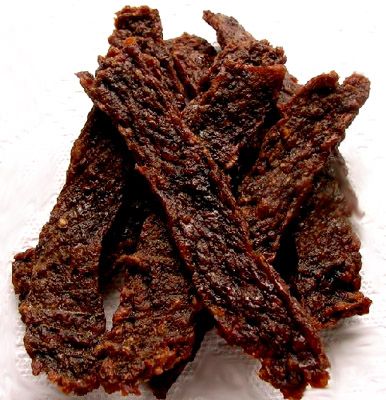
What is Buffalo jerky (Ha Giang dried buffalo meat)?
Buffalo jerky from Ha Giang is lean buffalo meat sliced along the grain, marinated, then smoked and air-dried until it reaches a firm, tearable texture. Unlike Western jerky, Ha Giang versions retain a thick strip cut, creating a satisfying chew that releases smoky beef-like juices as you pull the fibers apart. The hallmark profile is a balance of smoke, salt, heat, and wild spice—perfect with steamed rice, sticky rice, corn wine, or simply as a travel snack.
Flavor profile & texture
-
Aroma: clean campfire smoke with hints of lemongrass, ginger, and mac khen.
-
Taste: savory first, then peppery-numbing warmth, ending with a faint sweetness from the marinade.
-
Texture: dense and fibrous, tear-by-hand style; not brittle or crumbly.
-
Pairings: pickled mustard greens, green chili paste, sticky rice, or a cold beer.
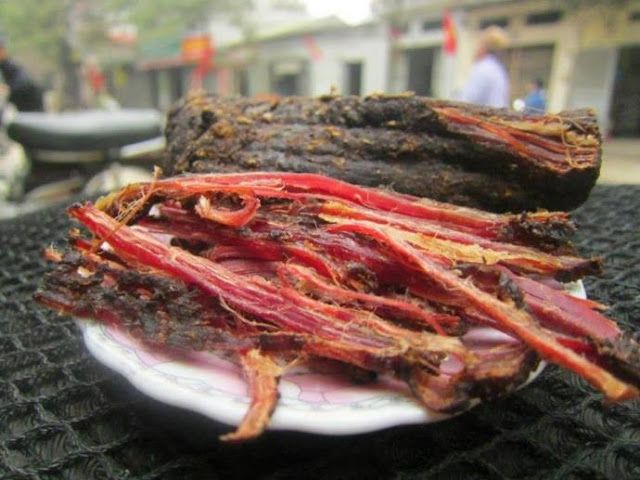
How it’s made (traditional method, simplified)
Select the cut: lean buffalo thigh or shoulder, trimmed of excess fat for a longer shelf life.
Marinate: salt, sugar, crushed garlic, mac khen, mild chili, lemongrass, and sometimes a splash of local rice/corn alcohol to lift aromas.
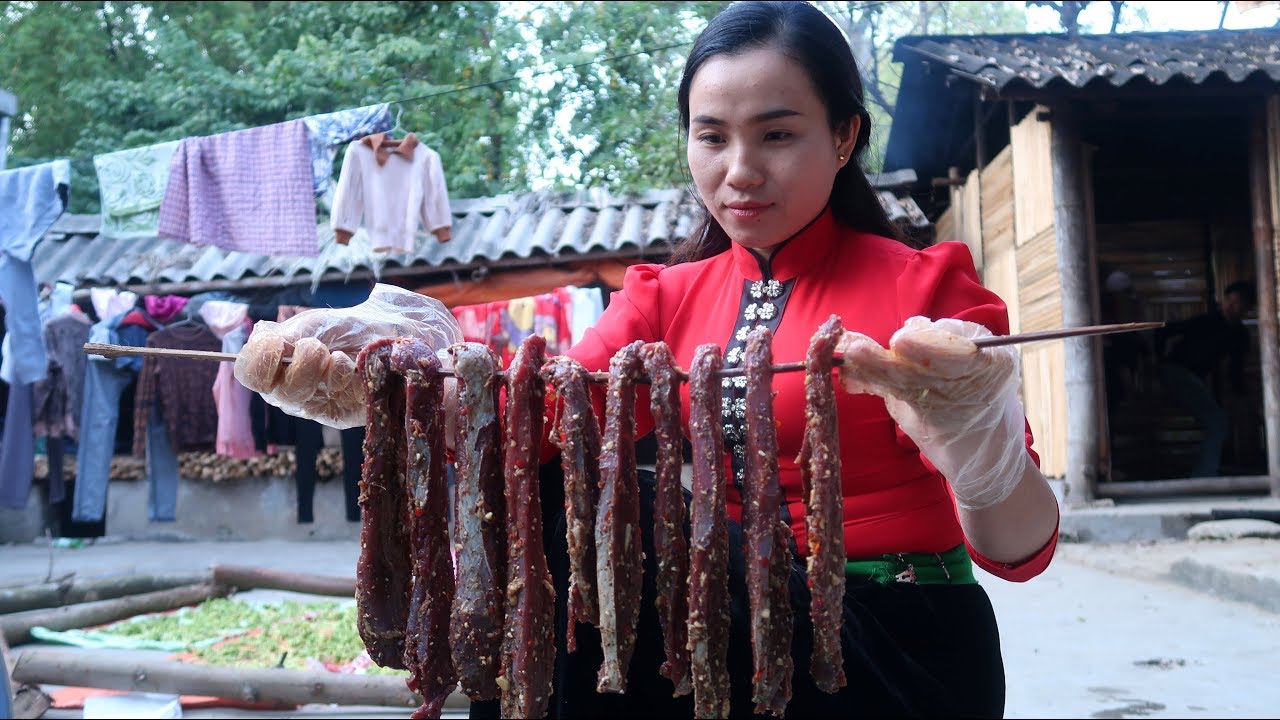
Rest: 4–12 hours in a cool place so spices penetrate the fibers.
Smoke & dry: hang strips above a wood-fire kitchen; low heat and smoke gently dry the meat over several hours to a few days, depending on thickness and humidity.
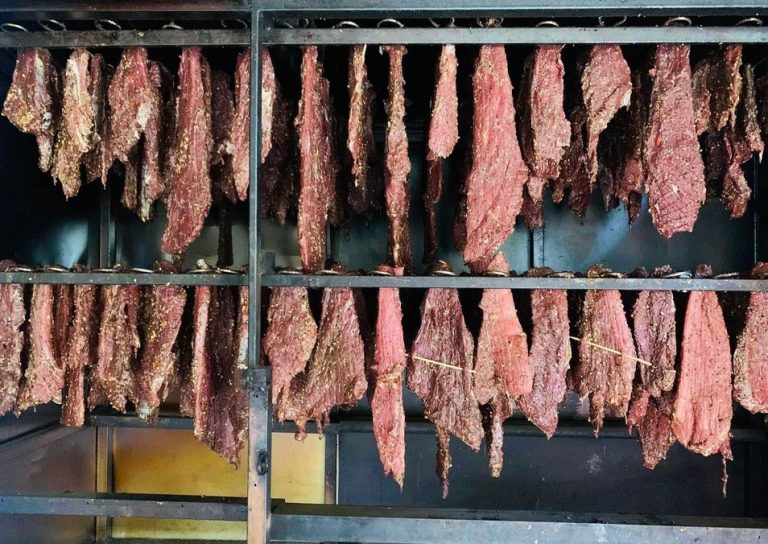
Finish: a quick pan-toast or sun-kissed drying may follow to lock in texture. The goal is dry outside, still supple inside.
Note: Every family and village has nuanced spice ratios; the individuality is part of the charm.
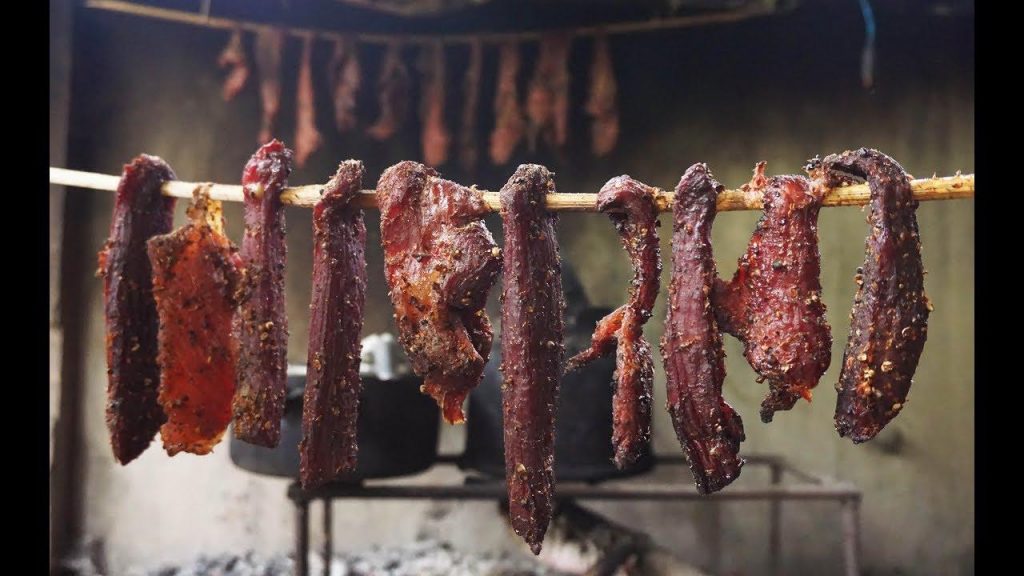
How to eat: serving ideas for travelers & home cooks
-
Tear and dip (classic): warm the jerky lightly over a pan or open flame, tear along the grain, and dip in lime-salt-chili or chẩm chéo (northwest dip).
-
Rice & noodle bowls: slice thinly and toss with warm rice, sautéed greens, or noodle salads for a smoky protein boost.
-
Beer snack/party platter: serve with roasted peanuts, cucumber, and pickled veggies.
-
Breakfast twist: scramble into eggs or top congee for a savory high-protein start.
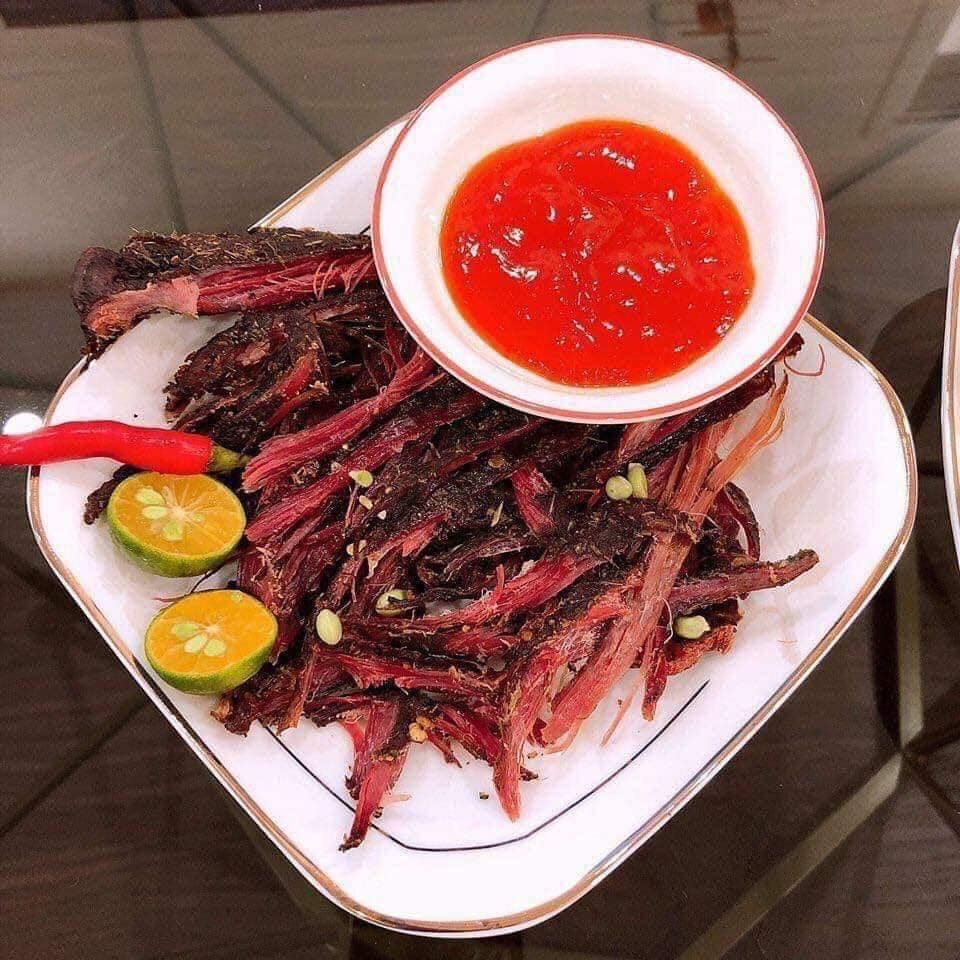
Where to buy Buffalo jerky (Ha Giang dried buffalo meat)
-
Local markets: Dong Van, Meo Vac, Yen Minh, Tam Son—look for busy stalls with steady turnover.
-
Specialty shops: small stores in Ha Giang City and Old Quarter-style streets in Dong Van that vacuum-seal jerky for travel.
-
Homestays/co-ops: many homestays sell house-made packs; ask about smoke date and ingredients.
Buyer tips: choose pieces that are evenly dark-brown, dry to the touch yet not rock-hard. Aroma should be smoky-clean, with no sour or rancid notes. Prefer vacuum-sealed packs for the ride home.
Storage & shelf life
-
Unopened (vacuum-sealed): store in a cool, dry place; check the date on the pack.
-
Opened: keep in an airtight bag or glass jar; refrigerate and consume within 7–10 days.
-
Longer storage: freeze in meal-size portions; thaw in the fridge and re-warm gently.
-
Food safety: if you notice unusual odor, sticky surface, or mold, discard.
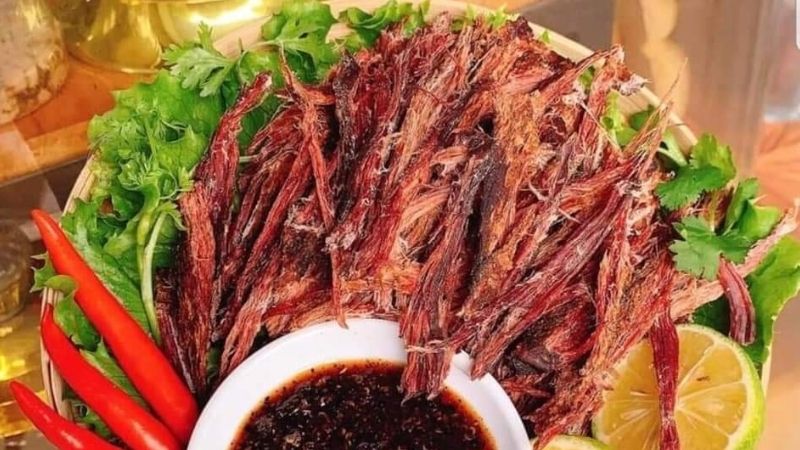
Price & value
Prices vary by cut, thickness, spice quality, and packaging. Expect mid-range to premium compared to regular pork/beef jerky due to buffalo meat scarcity and labor-intensive smoking. Paying a little more for hygienic processing and real spices is worth it—flavor and safety both improve.
Why it makes a great gift (and how to pack it)
-
Travel-friendly: light, compact, protein-rich.
-
Sense of place: the smoke and mac khen say “Ha Giang” in one bite.
-
Easy to share: tear-by-hand pieces for group snacks.
Packing tip: request vacuum seals, label the flavor level (mild/spicy), and double-bag if your luggage will cross big temperature swings.
Quick comparison: Ha Giang buffalo vs. common jerkies
| Feature | Ha Giang dried buffalo | Typical Western beef jerky |
|---|---|---|
| Cut & size | Thick strips, tear-by-hand | Thin slices, bite-size |
| Smoke | Wood-kitchen natural smoke | Often oven-dried, sometimes liquid smoke |
| Spice | Mac khen, chili, lemongrass, garlic | Black pepper, paprika, brown sugar |
| Texture | Dense, fibrous, chewy-supple | Chewy but usually softer |
| Serving | Warm, tear, dip | Ready-to-eat from pack |
FAQ – Buffalo jerky (Ha Giang dried buffalo meat)
Is it very spicy?
Usually medium. Ask for mild if you’re sensitive to chili; mac khen is aromatic and slightly numbing, not burning hot.
Does it taste like beef?
Similar umami, but deeper and smokier; buffalo is leaner and develops a distinct chew.
Can I bring it home on flights?
Typically fine in checked luggage if sealed. Always check your destination’s food import rules.
How do I reheat it?
Dry-toast in a pan, warm in a low oven, or hover briefly over a flame, then tear along the grain.
What to drink with it?
Local corn wine, green tea, or a crisp lager.
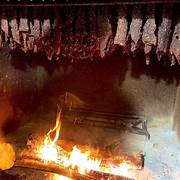
Conclusion
Buffalo jerky (Ha Giang dried buffalo meat) captures the essence of Vietnam’s far-north: mountain smoke, wild peppers, and communal kitchens. Buy from reputable vendors, choose vacuum-sealed packs, and store it right. Tear, dip, and share it on the road—or bring it home as an edible postcard from the karst peaks of Ha Giang. One bite, and you’ll understand why this rustic jerky earns a permanent spot on travelers’ must-eat lists.
Plan your adventure and enjoy buffalo jerky today! For more details and dedicated support, please contact Thelooptours Hotline: +84329196074.






